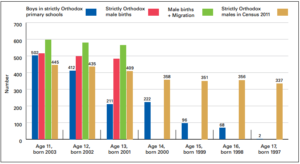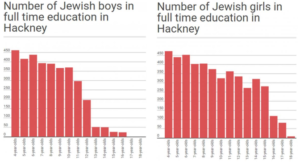
This week, the Government announced that it will move to make relationships and sex education (RSE) compulsory in all English schools, finally answering the decades-long calls of a rich consensus of education and children’s rights charities, public health experts, parents, teachers, and children themselves.
The move is not before time. The last time any action was taken on RSE was way back in the year 2000, when the Government of the time published the existing, but now prehistoric, official Sex and Relationships Education guidance for schools. This 17-year inertia was hugely irresponsible, and for the millions of children who have gone through school ill-informed about things like healthy relationships, safe sex, consent, sexting, and various LGBT and gender issues, it has been hugely damaging too.
To be clear then, the news that RSE will become a statutory subject is absolutely to be welcomed…but cautiously so.
Contained within the Government’s proposals is a clause requiring that any RSE provided in schools must be ‘appropriate having regard to…the religious background of the pupils’. And in the written ministerial statement announcing the move, the Department for Education states that ‘faith schools will continue to be able to teach in accordance with the tenets of their faith.’
If you’re unclear about what this means, here are five reasons why you should be very, very concerned. Each takes the form of a brief quote from those who advocate teaching RSE, to use the DfE’s ominous words, ‘in accordance with the tenets of their faith’.
-
‘For many years, sex and relationship education has not provided a godly stance on sexuality or sexual relationships. Instead, it reflects our society’s increasingly liberal sexual norms.’
From Andrea Williams, Chief Executive of Christian Concern, which among other things has recently campaigned to oppose the extension of hate crime offences to sexual orientation and gender identity.
-
‘Some are wedded to the notion of “children’s reproductive-health rights” – a euphemism for the “right” of children to engage in unlawful sexual intercourse, with confidential access to contraception and abortion.’
From Normal Wells, Director of the Family Education Trust, a ‘national educational trust which researches the causes and consequences of family breakdown’ and states that sex education is ‘indoctrination’ designed to ‘tear down traditional moral standards’
-
‘Since the Church has always taught that sexual love should always find its true place in marriage, a homosexual partnership and a heterosexual marriage can never be equated. This is the case in English law. The Church seeks to affirm the homosexual as a person, but cannot approve of homosexual genital acts.’
From the Sex and Relationships Education policy of a state Catholic school in England, featured on Faith Schoolers Anonymous last year and subsequently changed.
-
‘Today there is an urgent threat to [children’s] sexual purity from immoral messages which come to them as part of formal education and through the media… If they have not had clear biblical teaching on the subjects of marriage, relationships and sex, young people will be unable to answer the evil one’s lies’
From Christian sex education provider Lovewise, which conducts presentations in schools, telling children – among other things – that ‘most rape victims regret abortion’, that ‘abortions dramatically increase the risk of depression and suicide’, and that homosexuality is ‘damaging to mind, body and spirit’.
-
‘[Young people] do have choices about how they live their lives and the HPV vaccine suggests they won’t be able to control themselves. We should have higher expectations for them and show them more respect, not vaccinate them en masse against STIs’
Until recently, advice that appeared on the website of anti-abortion group LIFE, which warned that the cervical cancer jab ‘gives young people another green light to be promiscuous.’
No child, regardless of their religious or non-religious background, should be subjected to discrimination, misinformation, and bigotry, least of all as part of a subject that should be equipping them to stay safe, to be respectful, and to be themselves. But if the Government allows faith schools to opt out of providing accurate, evidence-based RSE to their pupils, that is exactly what is going to happen.
FSA team

 Time and time again in the
Time and time again in the 


